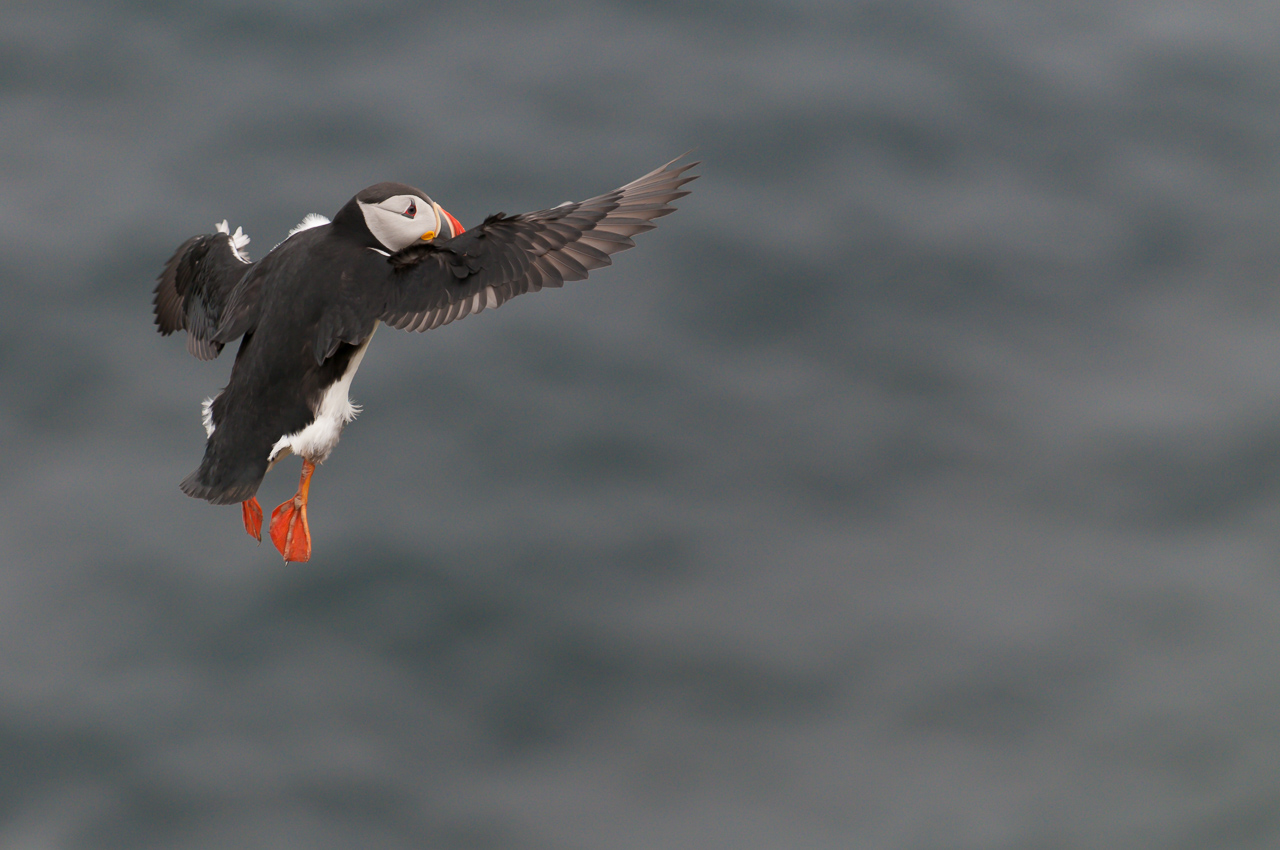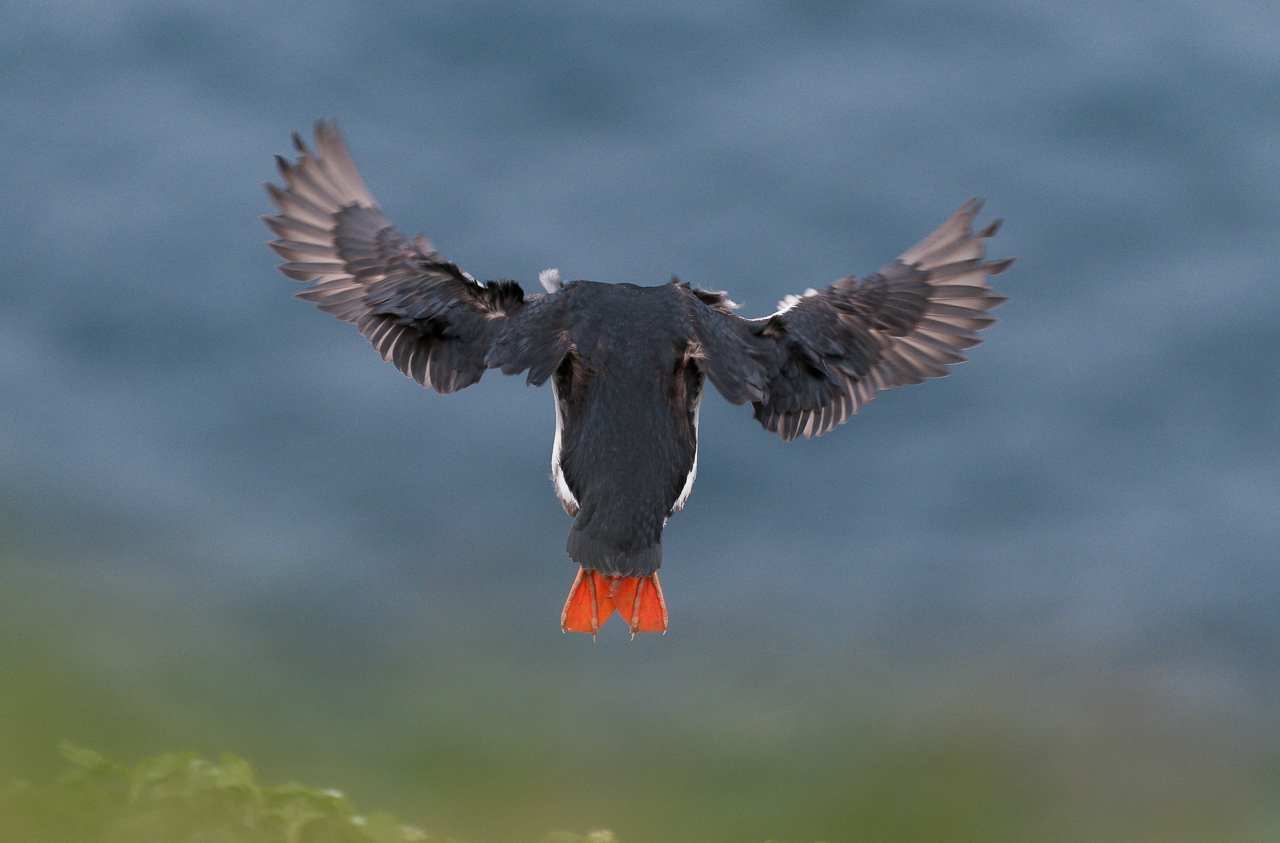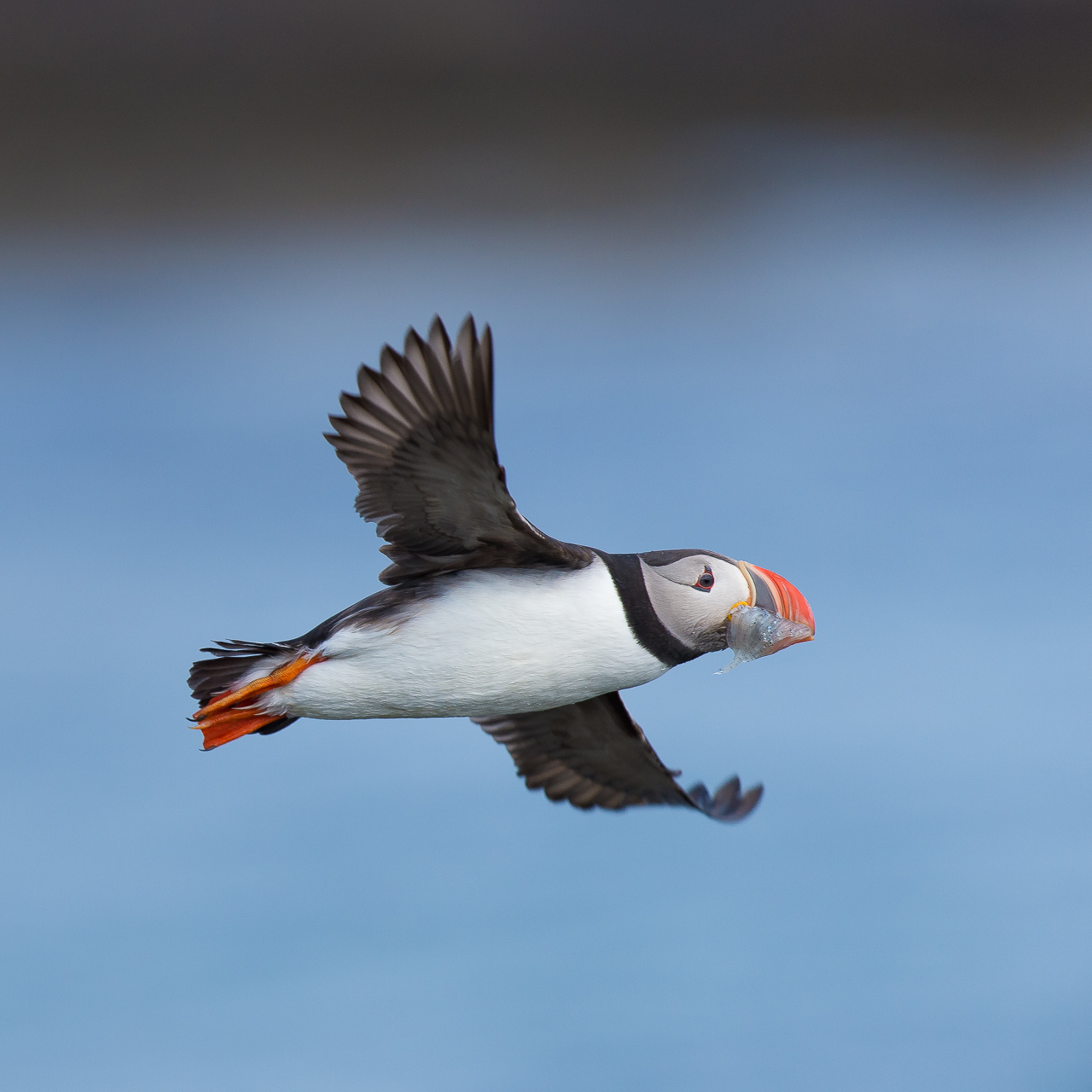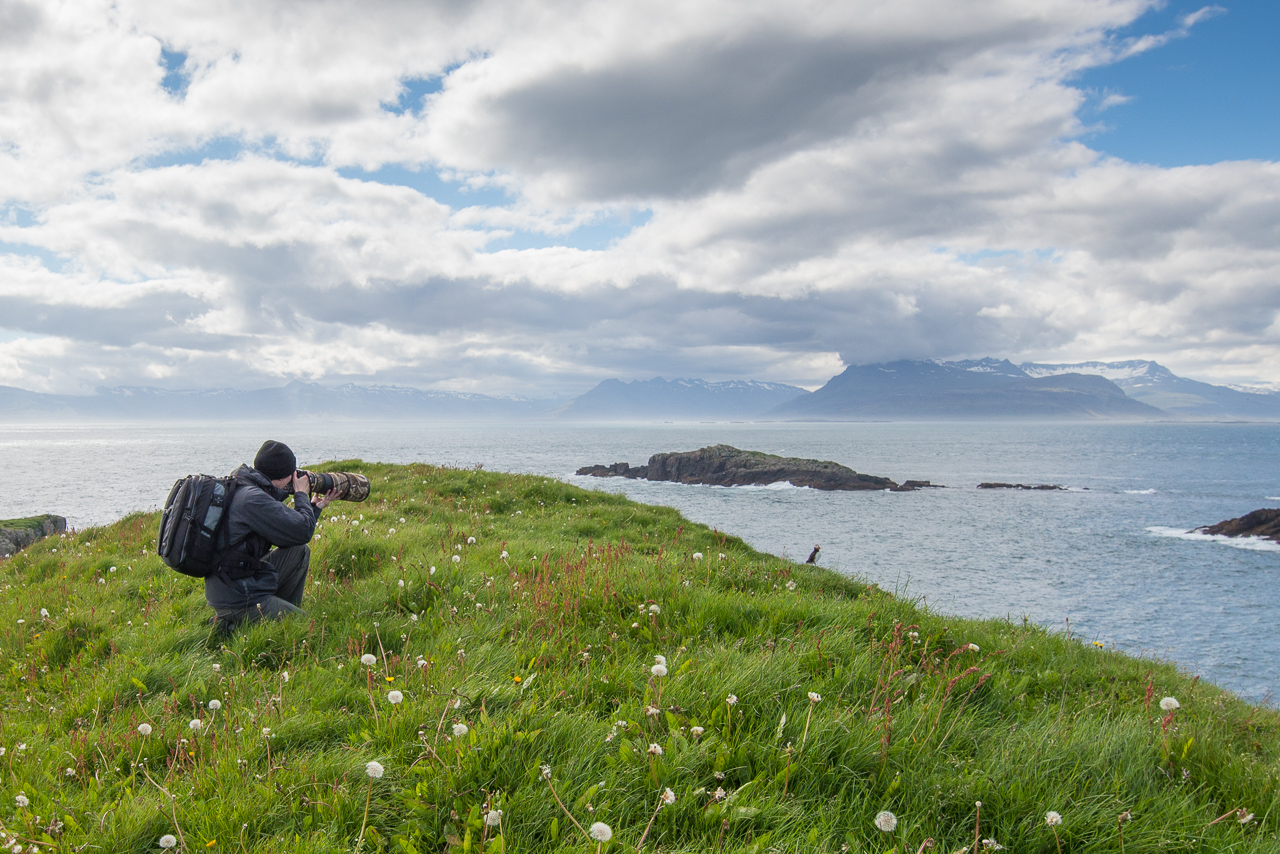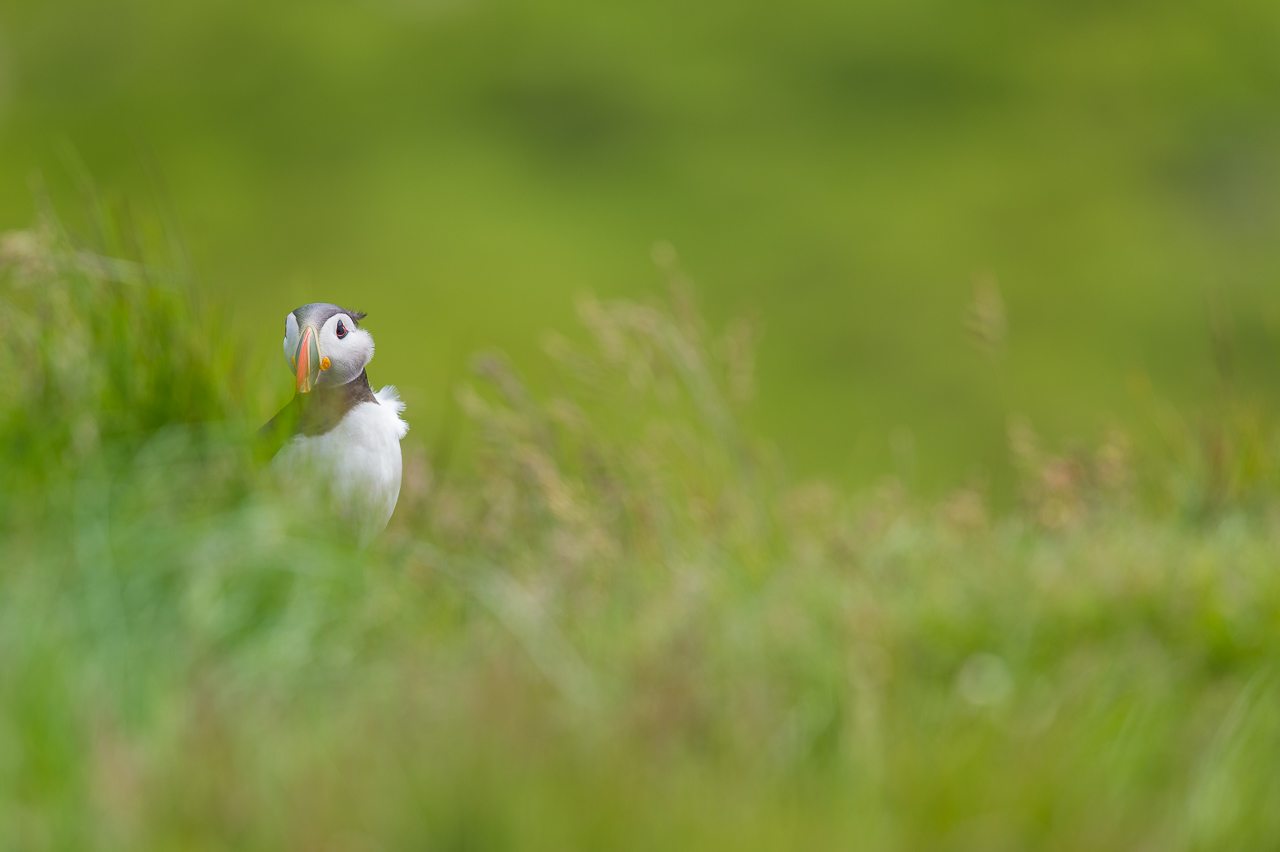The Atlantic Puffin is a member of the auk family and is the most common auk in Iceland.
The total population of puffins in Iceland is estimated to be between 8 and 10 million birds (over half of the world´s population).
The Puffin is a long-lived bird and the average life expectancy is estimated to be around 20-25 years. Puffins are highly social birds. They are believed to be faithful to their mates and generally pair for life.
Like other auks, puffins breed in colonies. One egg is laid generally in burrows on the boundary of rock and turf layers but also in other protected spots. Atlantic puffins dig burrows underground, about 2 feet in length for their nest, using their beaks to dig and their webbed feet to kick the dirt out.
Puffins are excellent swimmers and can dive to depths of up to sixty metres. They are also strong flyers and their 400 wing beats a minute can propel them to up to speeds of 90 km/h.
During breeding season, an adult puffin's beak turns a bright orange and yellow colour.
The atlantic puffin feed mainly on fish (sand-eel, capelin and fry of various species), squid and crustaceans and can carry up to ten fish at a time in their bills.
Behind the scenes and tips
The key to a nice shot is getting down to the level of the subject. But you have to take care as to where you go : you might be endangering yourself at a cliff-edge, and also risk disturbing nesting puffins.
Puffins are one of the most difficult birds to capture in flight. They are fast and very hard to track. To capture them in-flight, study the birds as they come into land and try to find the path they follow. I often shoot these types of image handheld, even with a 500mm lens, but a shorter lens is better because it's easier to track the bird (the best choice for me is a 300mm f/2.8).
Photos with soft, blurry backgrounds are perfect for making the subject stand out. Foreground is really important too. A long lens with a large aperture is ideal.
All photos © Florian Bestel except photos of me in action © Julie Bestel






